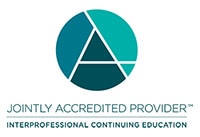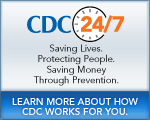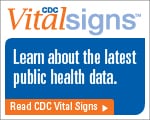Radiation Emergency Training for Poison Center and Public Health Professionals
WB4236
PROGRAM DESCRIPTION: The Radiation Emergency Training is designed to prepare poison control staff to react appropriately and share vital information in the unlikely event of a radiation emergency. This training will consist of five modules including: Types of Radiation, Protective Measures, Exposure and Contamination, Decontamination and Medical Countermeasures, and Risk Communication. Through this training, poison control staff will be equipped with the knowledge needed prior to a radiation emergency so that they will be prepared to respond.
OBJECTIVES:
At the conclusion of the session, the participant will be able to:
- Describe the different types of intentional and unintentional causes of radiation emergencies
- Identify the audiences most likely to seek information from poison centers following a radiation emergency
- Describe the primary role of poison center staff in fielding questions from information seekers following a radiation emergency
- Describe protective measures for medical providers, including personal protective equipment
- Communicate important protection messages to the general public for citizens that may have radiation exposure or are actually exposed to or injured by a blast
- Differentiate between exposure and contamination
- Identify high-risk populations
- Define short and long-term health effects related to exposure and contamination
- Provide initial triage and management actions for individuals exposed or contaminated
- Define internal and external contamination
- Identify the signs of internal and external contamination
- Define Acute Radiation Syndrome
- Identify the associated symptoms and treatment options of Acute Radiation Syndrome
- List two or more medical countermeasures that can be used in a radiation emergency
- Explain the importance of effective communication during a radiation emergency
- Outline key audiences and their information needs during a radiation emergency
- Explain radiation risk communication recommendations
- Describe the communication skills needed for different medical professionals in educating and counseling their patients or clients during or after a radiation emergency
FACULTY/CREDENTIALS:
Art Chang, MD, MS
Medical Toxicologist
Health Studies Branch
Division of Environmental Health Science and Practice
National Center for Environmental Health
Centers for Disease Control and Prevention
CAPT Josh G. Schier, MD, MPH, USPHS
Senior Medical Officer
National Center for Injury Prevention and Control
Centers for Disease Control and Prevention
Ziad Kazzi, MD
Associate Professor of Emergency Medicine and Medical Toxicology
Emory University
M Carol McCurley, BA
Lead Health Education Specialist
Emergency Management, Radiation and Chemical Branch
Division of Environmental Health Science and Practice
National Center for Environmental Health
Centers for Disease Control and Prevention
Adela Salame-Alfie, PhD
Senior Service Fellow
Radiation Studies Section
Emergency Management, Radiation and Chemical Branch
Division of Environmental Health Science and Practice
National Center for Environmental Health
Centers for Disease Control and Prevention
Armin Ansari, PhD, CHP
Radiological Assessment Team Lead
Emergency Management, Radiation and Chemical Branch
Division of Environmental Health Science and Practice
National Center for Environmental Health
Centers for Disease Control and Prevention
ORIGINATION DATE
ORIGINATION DATE
01/08/2020
01/08/2020
RENEWAL DATE
RENEWAL DATE
01/08/2022
01/08/2022
EXPIRATION DATE
EXPIRATION DATE
01/08/2024
01/08/2024
HARDWARE/SOFTWARE
HARDWARE/SOFTWARE
Computer Hardware; Internet connection; Browser (Google Chrome, Internet Explorer, Firefox, or Safari preferred)
Computer Hardware; Internet connection; Browser (Google Chrome, Internet Explorer, Firefox, or Safari preferred)
MATERIALS
MATERIALS
None
None
TARGET AUDIENCE
TARGET AUDIENCE
Physicians, Registered Nurses, Nurse Practitioners, Medical Assistants, Medical Students, Pharmacists, Pharmacy Technicians, Physician Assistants
Physicians, Registered Nurses, Nurse Practitioners, Medical Assistants, Medical Students, Pharmacists, Pharmacy Technicians, Physician Assistants
PREREQUISITES
PREREQUISITES
None
None
FORMAT
FORMAT
Enduring material
Enduring material
CONTACT INFORMATION
CONTACT INFORMATION
Art Chang at the National Center for Environmental Health’s
Division of Environmental Health Science and Practice,
770-488-1470 or Ctn7@cdc.gov.
Art Chang at the National Center for Environmental Health’s
Division of Environmental Health Science and Practice,
770-488-1470 or Ctn7@cdc.gov.
ACCREDITATION STATEMENTS
ACCREDITATION STATEMENTS

In support of improving patient care, The Centers for Disease Control and Prevention is jointly accredited by the Accreditation Council for Continuing Medical Education (ACCME), the Accreditation Council for Pharmacy Education (ACPE), and the American Nurses Credentialing Center (ANCC), to provide continuing education for the healthcare team.
CME: The Centers for Disease Control and Prevention designates this enduring material for a maximum of 1.75 AMA PRA Category 1 Credits™. Physicians should claim only the credit commensurate with the extent of their participation in the activity.
AAPA CME: Credit Designation Statement
The Centers for Disease Control and Prevention has been authorized by the American Academy of PAs (AAPA) to award AAPA Category 1 CME credit for activities planned in accordance with AAPA CME Criteria. This activity is designated for 1.75 AAPA Category 1 CME credits. Approval is valid until 01/08/2024. PAs should only claim credit commensurate with the extent of their participation
CNE: The Centers for Disease Control and Prevention designates this activity for 1.5 nursing contact hours.
CPE: The Centers for Disease Control and Prevention designated this Knowledge-based event for pharmacists to receive 0.175 CEUs in pharmacy education. The Universal Activity Number is JA-UAN: JA4008229-0000-22-257-H04-P
Once credit is claimed, an unofficial statement of credit is immediately available on TCEOnline. Official credit will be uploaded within 60 days on the NABP/CPE Monitor
CEU: The Centers for Disease Control and Prevention is authorized by IACET to offer 0.2 CEU’s for this program.
For Certified Public Health Professionals (CPH)
The Centers for Disease Control and Prevention is a pre-approved provider of Certified in Public Health (CPH) recertification credits and is authorized to offer 2.0 CPH recertification credits for this program.

In support of improving patient care, The Centers for Disease Control and Prevention is jointly accredited by the Accreditation Council for Continuing Medical Education (ACCME), the Accreditation Council for Pharmacy Education (ACPE), and the American Nurses Credentialing Center (ANCC), to provide continuing education for the healthcare team.
CME: The Centers for Disease Control and Prevention designates this enduring material for a maximum of 1.75 AMA PRA Category 1 Credits™. Physicians should claim only the credit commensurate with the extent of their participation in the activity.
AAPA CME: Credit Designation Statement
The Centers for Disease Control and Prevention has been authorized by the American Academy of PAs (AAPA) to award AAPA Category 1 CME credit for activities planned in accordance with AAPA CME Criteria. This activity is designated for 1.75 AAPA Category 1 CME credits. Approval is valid until 01/08/2024. PAs should only claim credit commensurate with the extent of their participation
CNE: The Centers for Disease Control and Prevention designates this activity for 1.5 nursing contact hours.
CPE: The Centers for Disease Control and Prevention designated this Knowledge-based event for pharmacists to receive 0.175 CEUs in pharmacy education. The Universal Activity Number is JA-UAN: JA4008229-0000-22-257-H04-P
Once credit is claimed, an unofficial statement of credit is immediately available on TCEOnline. Official credit will be uploaded within 60 days on the NABP/CPE Monitor
CEU: The Centers for Disease Control and Prevention is authorized by IACET to offer 0.2 CEU’s for this program.
For Certified Public Health Professionals (CPH)
The Centers for Disease Control and Prevention is a pre-approved provider of Certified in Public Health (CPH) recertification credits and is authorized to offer 2.0 CPH recertification credits for this program.
DISCLOSURE
DISCLOSURE
In compliance with continuing education requirements, all presenters must disclose any financial or other associations with the manufacturers of commercial products, suppliers of commercial services, or commercial supporters as well as any use of unlabeled product(s) or product(s) under investigational use.
CDC, our planners, content experts, and their spouses/partners wish to disclose they have no financial interests or other relationships with the manufacturers of commercial products, suppliers of commercial services, or commercial supporters. Planners have reviewed content to ensure there is no bias.
Content will not include any discussion of the unlabeled use of a product or a product under investigational use.
CDC did not accept commercial support for this continuing education activity.
In compliance with continuing education requirements, all presenters must disclose any financial or other associations with the manufacturers of commercial products, suppliers of commercial services, or commercial supporters as well as any use of unlabeled product(s) or product(s) under investigational use.
CDC, our planners, content experts, and their spouses/partners wish to disclose they have no financial interests or other relationships with the manufacturers of commercial products, suppliers of commercial services, or commercial supporters. Planners have reviewed content to ensure there is no bias.
Content will not include any discussion of the unlabeled use of a product or a product under investigational use.
CDC did not accept commercial support for this continuing education activity.
Instructions for Obtaining Continuing Education (CE)
Instructions for Obtaining Continuing Education (CE)
In order to receive continuing education (CE) for WB4236- Radiation Emergency Training for Poison Center and Public Health Professionals please visit TCEO and follow these 9 Simple Steps before 01/08/2024
Complete the activity
Complete the Evaluation at www.cdc.gov/TCEOnline
Pass the posttest at __80__% at www.cdc.gov/TCEOnline
FEES: No fees are charged for CDC’s CE activities.
In order to receive continuing education (CE) for WB4236- Radiation Emergency Training for Poison Center and Public Health Professionals please visit TCEO and follow these 9 Simple Steps before 01/08/2024
Complete the activity
Complete the Evaluation at www.cdc.gov/TCEOnline
Pass the posttest at __80__% at www.cdc.gov/TCEOnline
FEES: No fees are charged for CDC’s CE activities.

